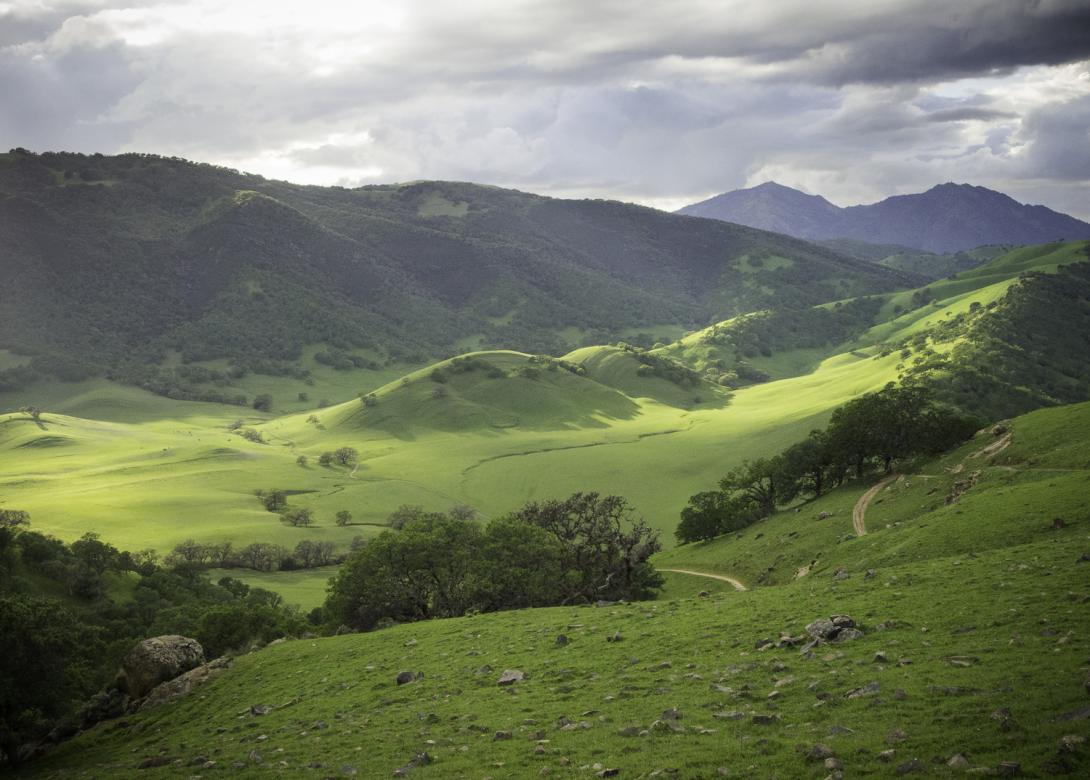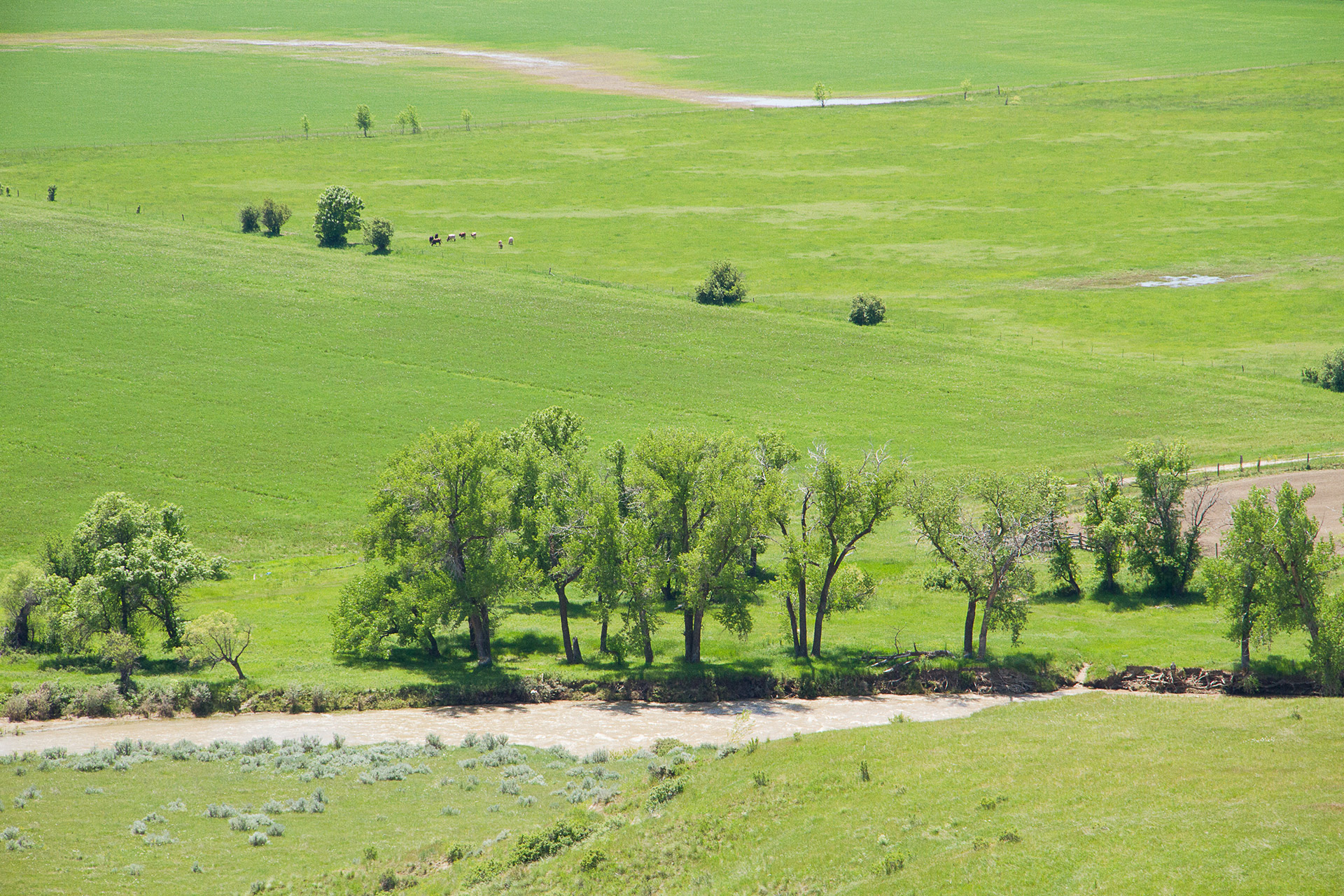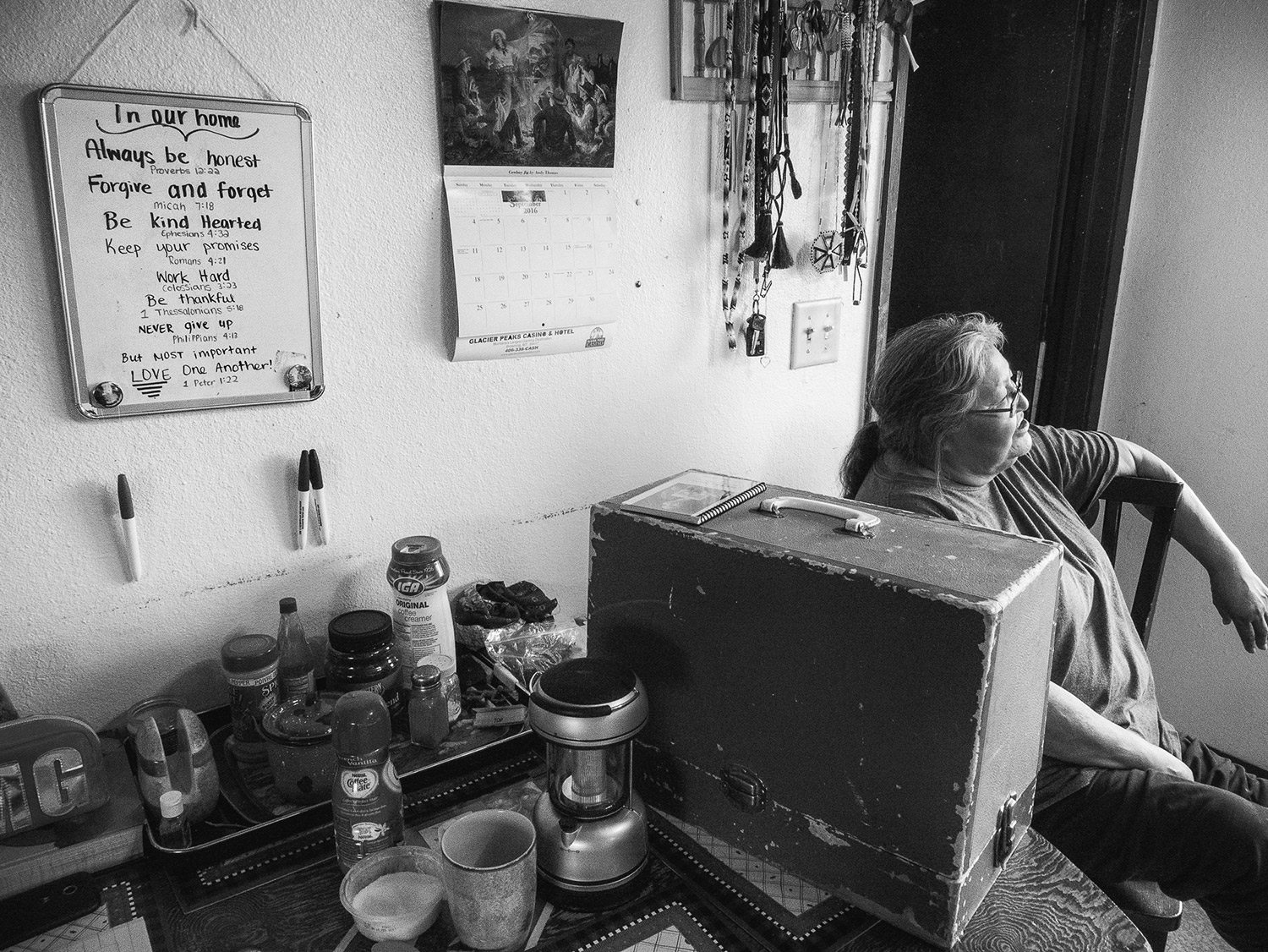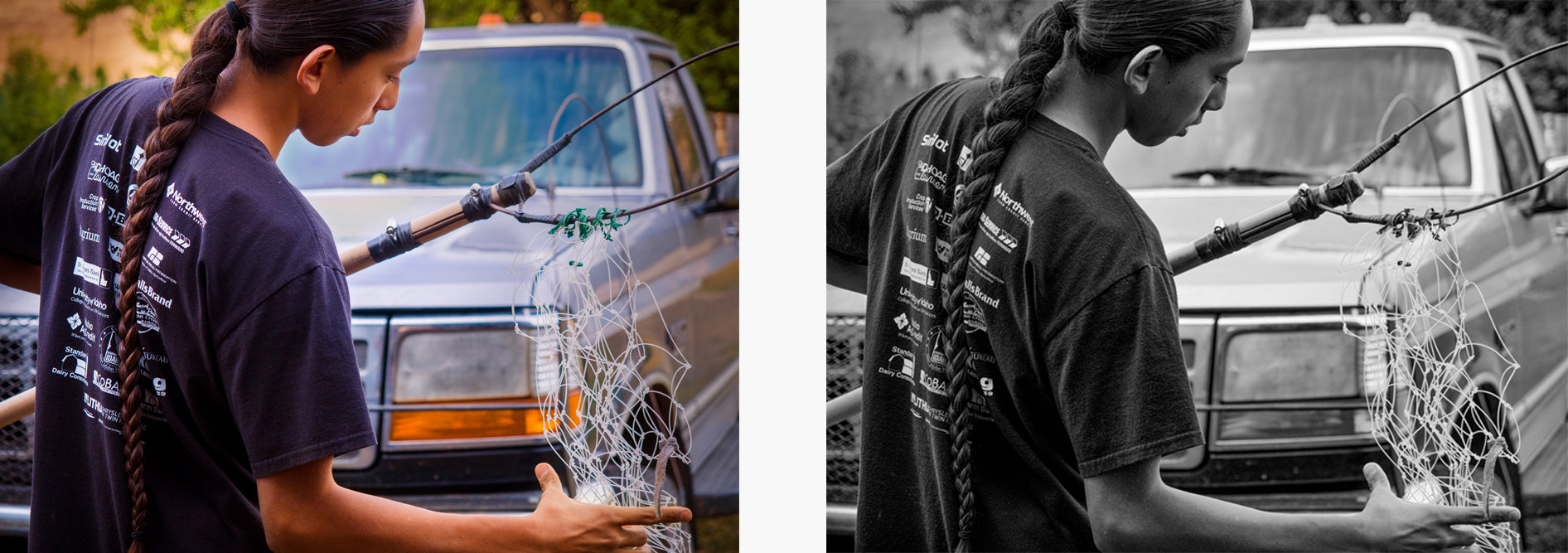Then and Now

Crossroads Where Tribes Traded, Round Valley, California, 2015 by Sue Reynolds
Reservations promised to Native Americans recall the history of conflict between tribes and the U.S. Government and Army. Reservations are lands reserved by tribes through treaties, Congressional Acts and Executive Order. They are permanent tribal homelands that represent a small fraction of the tribe’s original territory. The United States Constitution in Article VI declares treaty law as the “Supreme Law of the Land.”
The United States government passed the Indian Removal Act in 1830, which approved a systematic removal of American Indians from their ancestral lands and sacred sites in order to make the areas safe and available for expanding numbers of European settlers. Before the Spanish and later other Europeans came to claim the part of Northern California seen in the photograph above, it was a crossroads where different tribal groups traded and socialized.
At that time, indigenous tribes and civilizations spanned the continent. As European settlers moved further and further into lands occupied by indigenous peoples, conflicts arose. A complex history of un-ratified treaties resulted in the displacement of tribes from their homelands, sometimes peacefully and sometimes by force. Many tribes resisted and were forcibly removed by the U.S. Army.
The Sioux, among others, refused the relocation and confinement orders at first and stood ready to fight. The economy of the Sioux nation – Oceti Sakowin, which means "Seven Council Fires" – depended on the ability to hunt in a large area. Reservation confinement severely limited Plains tribes’ ability to feed themselves. One of the best known conflicts was the Sioux War, between 1876 and 1881, which included the Battle of Little Bighorn in 1876.

The Little Big Horn National Battlefield -- now a National Monument -- was once the site of fierce fighting between the combined forces of the Lakota, Northern Cheyenne and Arapaho tribes and the 7th Calvary Regiment of the U. S. Army, led by General George Armstrong Custer. The battle, commonly referred to as Custer’s Last Stand, was a huge victory for the Natives. Custer and over 300 of his 700 soldiers and scouts were killed or severely wounded and went on to become folk heroes in American history for some, while Chief Sitting Bull and Crazy Horse became heroes for others.
Note: Older students can research the Sioux War and the Battle of Little Bighorn in advance to expand the conversation. Discussion and Writing Questions
|
Bear Butte, as well as all of the land comprising South Dakota’s Black Hills, is a spiritual home – a place reserved for prayer and ceremony - for many tribes across the northern plains, including the Lakota. This area traditionally was neutral ground, where even if members of different tribes were in conflict, here they treated each other peacefully.
The Black Hills were part of the original Great Sioux Reservation created by the Fort Laramie Treaty of 1868, but a few years later the U.S. Government violated that treaty and took them back. Today, Bear Butte is a State Park with a portion reserved solely for Native people to use for their traditional ceremonies. In addition, the Bear Butte visitor center exhibits excellent displays of historic religious and related artifacts to help explain the spiritual beliefs and traditions that have been part of this landscape for hundreds, if not thousands of years.
One summer, while hiking near Bear Butte, photographer Sue Reynolds met a group of teens from the Ft. Berthold Reservation in North Dakota. Their leaders explained that the teens were learning about Lakota star knowledge, apparently a fairly sophisticated astronomy discipline. A video on Lakota astronomy is included in the External Sites, Readings and Videos section of this Resource.

2016 by Sue Reynolds
In her home on the Blackfeet Reservation, Rebecca’s kitchen white board lists the important rules she wants her family to live by: be honest, forgive, be kind hearted and thankful, keep promises, work hard, and, most important, love one another. Rebecca teaches her grandchildren these Christian values, which she says are the same as traditional Blackfeet teachings. She explains that life is hard on the reservation and that she and others work to prevent bullying, alcoholism and drug use and to focus on education. She practices spelling, vocabulary and writing with her grandson every day.
Discussion and Writing Questions
|
View related video: Walking Between Two Worlds: Preparing for the Future

Right: Jacob Piapot Learns Salish at NKwusm, Flathead Reservation, Montana, 2014 by Sue Reynolds
Discussion and Writing Questions
|
Click here to view poem full screen
Dixon Direction
Directions are simple here.
Geese know where to go
and eagles fly. Yet sometimes
you get lost on wrong roads.
Then
when you come to school,
you seek from this high window
and find living river, red willow,
white aspen, old Juniper and pine.
This is you.
And bright, clay cliffs fix the stars.
Put Sey (Good Enough), by Victor A. Charlo. Available on Amazon.
Group ExerciseTo begin discussion of this poem take students through this exercise and see an inquiry approach to all Everyday Native poems. Ask students to choose a word or two to describe what the poem communicates to them as if they were creating a #. Have students share their # with the group or class. Each # description becomes an opportunity to ask leading questions, such as "What about the poem suggests this # to you?" Student should cite specific details seen within the work to support their responses. It's fine for more than one student to have the same #. One-by-one have students say their # aloud to create a group or class poem inspired by Victor's poem. |
Discussion and Writing Questions
|

Tiyapo lives on the Nez Perce Reservation in Idaho. He is an enrolled Spokane tribal member, and his grandfather was a full blood Nez Perce. Tiyapo enjoys fishing and gathering other traditional foods including deer, elk and berries with his family. Sue Reynolds photographed Tiyapo getting his fishing net ready in both black-and-white and color. Fishing is a huge activity in this and other parts of Indian Country, giving kids a source of pride and opportunity for fun on reservations where there sometimes isn’t much to do, though that is changing.
Discussion and Writing Questions
|
Other Resources"The Surrounded", by D’Arcy McNickle. Available on Amazon. "A Dark Day." This history of the 1890 Wounded Knee massacre explores the factors that led to this tragedy in South Dakota during the period when Native Americans were moved on to reservations. “Seeking Justice: ‘100 Years’ Traces Cobell’s Frustrating Fight with the Feds.” The Missoulian, 7 February, 2017. "Tribal Nations," Map of Montana's Indian Reservations. Montana Office of Public Instruction. "Tribal Territories in Montana," Map of Montana Indians' Ancestral Homelands and Reservations, Appendix A on page 31. Montana Office of Public Instruction. "Montana Indians: Their History and Location." Montana Office of Public Instruction. "Reservation Maps and Prairie Turnips," Map of South Dakota's Indian Reservations. The Wolakota Project. "Sioux Treaty Lands and Surrounding Area," Map of original South Dakota Indian Reservation. North Dakota Studies. |
Click here to access our extensive library of related websites, readings, videos, and more.
